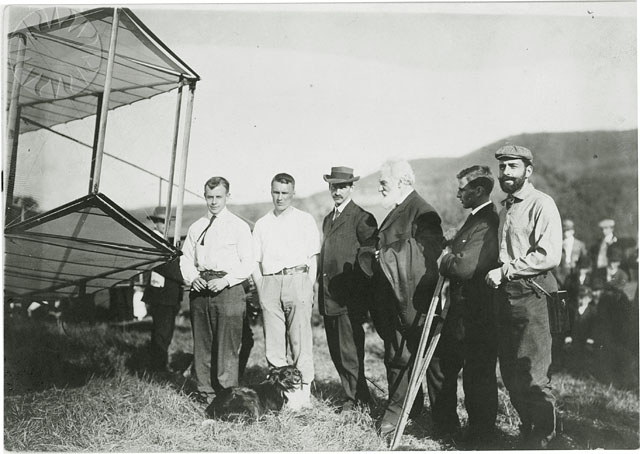Thomas Etholen Selfridge (February 8, 1882 – September 17, 1908) was a first lieutenant in the U.S. Army and the first person to die in a crash of a powered airplane. He was a passenger on an aircraft piloted by Orville Wright.
In August 1908, the Army tentatively agreed to purchase an airplane from the Wright Brothers and had scheduled the acceptance trials in September. Selfridge, with an interest in both heavier-than-air and lighter-than-air ships, went to Fort Myer, to watch Orville Wright demonstrate the Wright Flyer for the US Army Signal Corps division, Selfridge arranged to be a passenger while Orville piloted the craft.
Selfridge took his first flight on December 6, 1907, on Alexander Graham Bell's tetrahedral kite, the Cygnet, made of 3,393 winged cells. It took him 168 feet in the air above Bras d'Or Lake in Nova Scotia, Canada, and flew for seven minutes. This was the first recorded flight carrying a passenger of any heavier-than-air craft in Canada.
In August 1908, the Army tentatively agreed to purchase an airplane from the Wright Brothers and had scheduled the acceptance trials in September. Selfridge, with an interest in both heavier-than-air and lighter-than-air ships, went to Fort Myer, to watch Orville Wright demonstrate the Wright Flyer for the US Army Signal Corps division, Selfridge arranged to be a passenger while Orville piloted the craft.
On September 17, 1908, the Wright Flyer circled Fort Myer 4½ times at 150 feet. Halfway through the fifth circuit, the right propeller broke, losing thrust. This set up a vibration, causing the split propeller to hit a guy wire bracing the rear vertical rudder. The wire tore out of its fastening and shattered the propeller; the rudder swiveled to the horizontal and sent the Flyer into a nose-dive. Orville shut off the engine and managed to glide to about 75 feet, but the Flyer hit the ground nose first.
When the craft hit the ground, both Selfridge and Wright were thrown against the remaining wires. Selfridge was thrown against one of the wooden uprights of the framework, and his skull was fractured. He underwent neurosurgery but died that evening without regaining consciousness. He was 26.
When the craft hit the ground, both Selfridge and Wright were thrown against the remaining wires. Selfridge was thrown against one of the wooden uprights of the framework, and his skull was fractured. He underwent neurosurgery but died that evening without regaining consciousness. He was 26.
Orville suffered severe injuries, including a broken left thigh, several broken ribs and a damaged hip, and was hospitalized for seven weeks. Selfridge was not wearing any headgear, while Wright was only wearing a cap, as two existing photographs taken before the flight prove. If Selfridge had been wearing a helmet of some sort, he most likely would have survived the crash. As a result of Selfridge's death, the US Army's first pilots wore large heavy headgear reminiscent of early football helmets.
Thomas Selfridge is buried at Arlington National Cemetery; which is adjacent to Fort Myer.


,.jpg)


